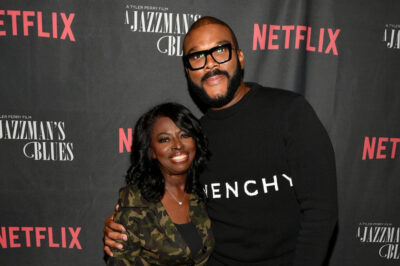The South African entertainment scene has been buzzing with controversy surrounding two prominent figures, Gogo Maweni and Gogo Skhotheni. Their public feud has not only captivated audiences but also raised questions about the ethics and responsibilities of traditional healers in society. This article delves into the details of their conflict, the allegations exchanged, and the broader implications for their followers and the community.
Background of the Feud
Gogo Maweni, known for her celebrity status as a traditional healer, has found herself in a contentious relationship with Gogo Skhotheni, another well-known figure in the same field. The conflict reportedly escalated when allegations surfaced regarding Maweni’s personal life, particularly concerning her interactions with Skhotheni’s husband. This revelation ignited a firestorm of accusations, with both women taking to social media to air their grievances, leading to a public spectacle that has drawn in thousands of viewers and commentators alike.

The feud intensified when Gogo Maweni was accused of having a compromising video involving Gogo Skhotheni’s husband. This allegation not only questioned Maweni’s integrity but also sparked a series of defensive posts from both parties, where they exchanged insults and accusations, each trying to discredit the other’s reputation. This public exchange has not only entertained their followers but has also highlighted the darker sides of fame and the pressures that come with it.
Key Allegations and Responses
In the latest developments, Gogo Maweni has faced accusations of unethical behavior, with claims that she has been involved in activities that contradict the principles of traditional healing. Critics argue that her actions reflect poorly on the profession, which is often viewed with skepticism by the broader public. Supporters of Gogo Skhotheni have rallied around her, condemning Maweni’s actions and calling for accountability among traditional healers.
Gogo Skhotheni, on the other hand, has not remained silent. She has publicly challenged Maweni, asserting that her actions are damaging to the image of all sangomas (traditional healers) in South Africa. Skhotheni has taken to various platforms to express her disappointment and frustration, emphasizing the need for respect and dignity within their profession. The back-and-forth between the two has led to increased media coverage, with numerous articles and social media posts analyzing the implications of their feud on traditional healing practices and beliefs.
Community Reactions
The public’s response to this feud has been mixed. Many fans and followers of both Gogo Maweni and Gogo Skhotheni have expressed their opinions on social media, with some supporting one side over the other. This division has sparked discussions about loyalty, ethics, and the responsibilities that come with being a public figure in the traditional healing community. Some followers have even gone so far as to call for boycotts against Maweni, claiming that her actions are not representative of the values upheld by traditional healers.
Social media platforms have become battlegrounds for supporters and critics alike. Hashtags related to the feud have trended, with users sharing their thoughts, memes, and even personal experiences with traditional healers. This phenomenon highlights the significant role that social media plays in shaping public perception and influencing the narratives surrounding such controversies.
The Broader Implications
The ongoing feud between Gogo Maweni and Gogo Skhotheni raises important questions about the role of traditional healers in contemporary society. As public figures, they are not only representatives of their practices but also role models for their followers. The conflict underscores the need for ethical standards within the profession, as well as the importance of maintaining a positive public image.
Furthermore, this situation reflects a broader societal issue regarding the perception of traditional healing in South Africa. While many people turn to sangomas for guidance and support, incidents like this can lead to skepticism and mistrust. The feud may ultimately serve as a wake-up call for the community, urging traditional healers to uphold the values and ethics that their practice embodies.
Conclusion
The conflict between Gogo Maweni and Gogo Skhotheni is more than just a personal feud; it is a reflection of the complexities and challenges faced by traditional healers in the modern world. As their public spat continues to unfold, it serves as a reminder of the responsibilities that come with fame and the impact that personal actions can have on professional reputations. The outcome of this controversy may well shape the future of traditional healing practices in South Africa, making it imperative for all involved to consider the broader implications of their actions.
As the situation develops, it will be interesting to see how both Gogo Maweni and Gogo Skhotheni navigate their careers and the public’s perception of them. The lessons learned from this feud may resonate beyond their individual experiences, influencing the next generation of traditional healers in South Africa.
News
Fox News’ Kat Timpf Outlines Next Steps Following Breast Cancer Diagnosis, Says ‘It’s Over’ Once She Recovers
The broadcaster shared her upcoming plans, which include “a double mastectomy” and “getting back in the gym” Kat Timpf. Photo: Omar Vega/Getty…
EXCLUSIVE: Today’s Sheinelle Jones to officially replace Hoda Kotb as Jenna Bush Hager’s co-host after she’s back from family leave
TODAY’s Sheinelle Jones is poised to officially replace Hoda Kotb as Jenna Bush Hager’s co-host after she returns from family…
Tyler Perry Pays Heartfelt Tribute To Angie Stone: ‘She Touched So Many Lives’
Tyler Perry Pays Heartfelt Tribute To Angie Stone: ‘She Touched So Many Lives’ As the entertainment world and music fans…
Witness Testifies Seeing Kelly Smith Dragging Joshlin into Shack Before Her Disappearance
Key Testimony Revealed in Western Cape High Court A crucial witness has testified in the Western Cape High Court regarding…
Joslin Smith Found After a Year-Long Search: A Nation Reacts to a Heartbreaking Case
In a major breakthrough, the South African Police Service (SAPS) confirmed the discovery of seven-year-old Joslin Smith, who had been…
The shocking story of the 8-year-old girl who survived the ZCC Moria bus accident that k!lled 45 people who were going to church. See here why she is the only one who survived & yet the other 45 people died.
8-Year-Old Girl Sole Survivor in Tragic Bus Crash That Kills 45 Easter Pilgrims in South Africa A Devastating Accident An…
End of content
No more pages to load













